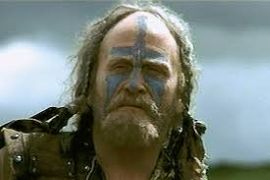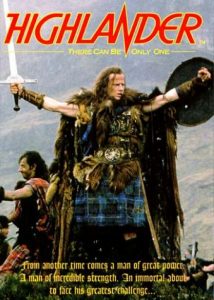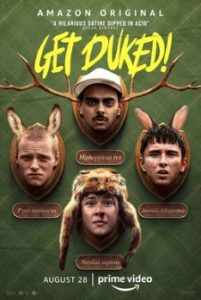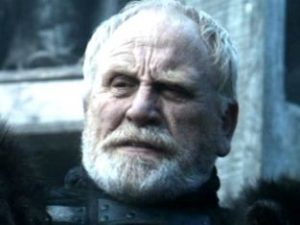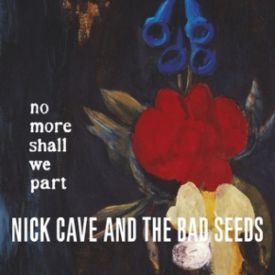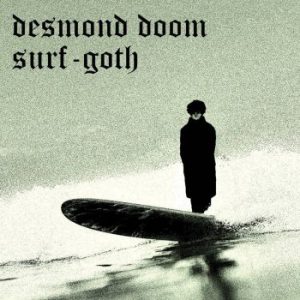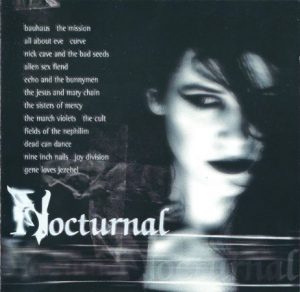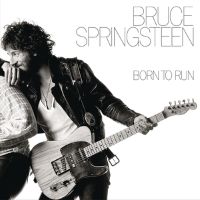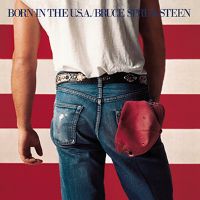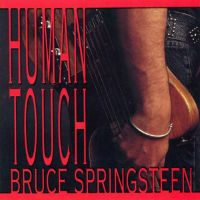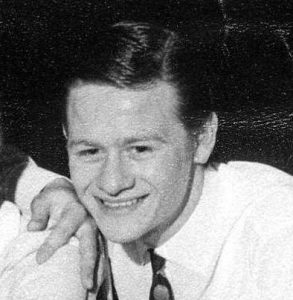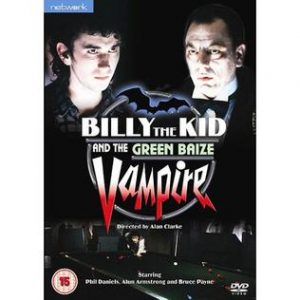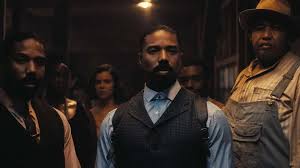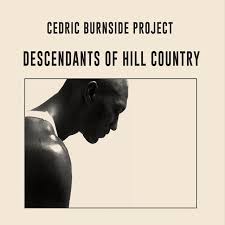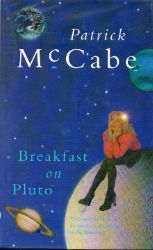
© Paul Gregory Productions / United Artists
The smash-hit movie Sinners (2025), which I wrote about recently, has got me thinking about other films that fall into the ‘southern-gothic’ category. Southern gothic is a genre Wikipedia defines as a work “heavily influenced by Gothic elements and the American South”, commonly featuring “deeply flawed, disturbing, or eccentric characters sometimes having physical deformities or insanity; decayed or derelict settings and grotesque situations”; and ingredients like “poverty, alienation, crime, violence, forbidden sexuality, or hoodoo magic.”
So, here’s the first half-dozen entries in my list of favourite southern-gothic movies. I should say I’ve left out ones that are just as classifiable as horror movies or lean heavily into the supernatural. Otherwise, the list would be twice as long. For that reason, there’s no Herschell Gordon Lewis’s Two Thousand Maniacs! (1964), Tobe Hooper’s Texas Chainsaw Massacre (1974), Lucio Fulchi’s The Beyond (1981), Neil Jordan’s Interview with the Vampire (1994) or Bill Paxton’s Frailty (2001). I’ve even omitted Sinners, the movie that inspired this list in the first place.
Similarly, I’ve left out a couple of potential southern-gothic films that more comfortably exist as fantasies, for example, Joel and Ethan Coen’s O Brother, Where art Thou? (2000), Tim Burton’s Big Fish (2003) and Ben Zeitlin’s Beasts of the Southern Wild (2012).
Anyway, boys and belles, let’s cut to the chase and wade into that cinematic bayou…
Swamp Water (1941)
A clean-cut, somewhat naïve young lad (Dana Andrews) goes looking for his lost dog in Georgia’s Okefenokee Swamp one day and discovers a dishevelled fugitive (Walter Brennan), who’s been hiding out in the wilderness since being accused of murdering a deputy. Andrews forms a partnership with Brennan. In the local town, he sells the hides of the animals Brennan hunts and traps in the swamp whilst also keeping a protective eye on the fugitive’s vulnerable daughter (Anne Baxter). Later, Andrews learns that Brennan wasn’t responsible for the deputy’s death and the real killers – whose number include Ward Bond and John Carradine – decide to go gunning for Brennan and eliminate him before the truth comes out.

© 20th Century Fox
The first American movie made by the great French director Jean Renoir, Swamp Water doesn’t frighten the horses too much and even has a happy ending. But its setting, the murky, alligator-and-snake-ridden swamp, earns it its southern gothic spurs. Walter Brennan, whom I knew and loved in my childhood as Stumpy, John Wayne’s gnarly old deputy in Howard Hawkes’ Rio Bravo (1959), is fine; though I find the hero played by Dana Andrews – later to star in Don Siegel’s masterpiece Invasion of the Body Snatchers (1956) – a bit of a simpleton and rather annoying. Meanwhile, parts of this film seem to have inspired the 2012 movie Mud featuring, in the Brennan role, one Matthew McConnaughey. Of whom we will hear more later…
Night of the Hunter (1955)
Based on the just-as-good 1953 novel by Davis Grubb and directed by legendary thespian Charles Laughton, Night of the Hunter, more than any other film on this list, deserves the title ‘cinematic classic’. The 2022 Greatest Films of All Time poll in Sight and Sound magazine, for instance, ranked it at number 25. Sadly, it was Laughton’s sole credit as director. Despite its massive reputation later, the critics of the day couldn’t get their heads around it and slagged it off and the film was a flop, deterring him from directing again.
Night of the Hunter focuses on phony preacher Harry Powell (Robert Mitchum), really a murderer and crook. During a sojourn in a West Virginia prison for stealing a car, Powell learns from a cellmate, who killed two men during a bank robbery and is awaiting execution, that the bank money he stole is hidden away somewhere in his household. Once he’s a free man again, Powell proceeds to his late cellmate’s town, does his preacher act, ingratiates himself into the community, and ends up marrying the dead man’s widow Willa (Shelley Winters). The key to finding the hidden loot, it transpires, is Willa’s young son John (William McClellan Chapin) and even younger daughter Pearl (Sarah Jane Bruce) – but John is instinctively distrustful of his new stepdad. After Powell kills Willa, John escapes with Pearl and they take the money with them. They find refuge in the home of a tough but kindly old woman called Rachel (Lillian Gish), and it’s Rachel who has to withstand both the charms and the wrath of Powell when he comes hunting the children.
Laughton imbues the film with a weird, off-kilter feel that’s almost fairy-tale-like at times. This is most evident in the sequence where the kids escape from Powell in a rowing boat. Powell’s ogre-ish silhouette appears above the nocturnal riverbank and comes loping down towards them. They barely manage to get the boat into the river and Powell flounders in the mud behind them, emitting a bloodcurdling bellow of rage. Then things get really phantasmagorical. Little Pearl, oblivious to the danger she’s been in, sings a lullaby while their boat drifts beneath a hauntingly starry sky and past spider’s webs and croaking toads that loom spookily in the foreground.

© Paul Gregory Productions / United Artists
As Powell, Robert Mitchum is unforgettable. He’s by turns magnetic, devious, deranged and, Terminator-style, terrifyingly unstoppable. His warped charisma is best displayed in the famous scene where he explains why the words ‘love’ and ‘hate’ are tattooed on his knuckles. (“H-A-T-E… It was with this left hand that old brother Cain struck the blow that laid his brother low…”) Mitchum’s performance here is the standard against which all other cinematic southern-gothic villains get measured.
Incidentally, Shelley Winters didn’t have much luck as a single mom who re-marries a guy who proves to be a wrong ‘un. A few years later, she was in Stanley Kubrick’s version of Lolita (1962), playing the title character’s hapless mother who weds James Mason’s Humbert Humbert.
To Kill a Mockingbird (1962)
Robert Mulligan’s film, like the 1960 Harper Lee novel on which it’s based, is more a legal drama, a coming-of-age story and a meditation on the evils of racism than it is a work of southern gothic. But one character links it to the genre: the reclusive, rarely-seen Boo Radley who’s the subject of a thousand scary stories and rumours among the kids in the Alabama neighbourhood where To Kill a Mockingbird takes place. Watching this film in my boyhood, I was scared shitless by the scene where the kids sneak onto Boo’s premises at night and, suddenly, his shadow rears up behind one of them.
Boo seemed so impressively scary that I was almost disappointed when the twist about his real nature came at the end, though obviously that twist is important for the story’s message about looking beyond appearances and trusting in human decency. (The fact there was a 1990s indie rock band called the Boo Radleys, whose music I found lame, also lessened poor old Boo’s mystique for me.)

© Brentwood Productions / Universal Pictures
Now that I think about it, as a kid, I found the scene where the saintly but short-sighted Atticus Finch (Gregory Peck) has to go out and shoot a rabid dog pretty frightening too.
Cape Fear (1962)
Robert Mitchum’s Harry Powell and Gregory Peck’s Atticus Finch may be the two most famous characters in southern-gothic movies. Thus, Cape Fear is the King Kong vs. Godzilla of the genre in that it pitches Mitchum (again villainous) against Peck (again heroic). This time, Mitchum plays ex-convict Max Cady, out of prison after eight years’ incarceration and possessed by hatred for Peck’s Sam Bowden, a respectable Georgia man who testified against him at his trial. Cady gets revenge by waging an escalating war of nerves against Bowden, his wife and teenaged daughter. The latter he identifies as a particular weak spot and soon he’s hinting disgustingly to Bowden about what he intends to do to her.
Mitchum’s Max Cady is a less complex villain than Harry Powell. But with his hooded eyes, bemused expression, trashy sartorial style (safari jacket, Panama hat and cigar at all times), slurred but laconic voice, slow but relentless gait and general, oily smugness – leavened with bursts of psychotic violence – he’s as memorable. Peck doesn’t have a lot to do apart from look harassed and, later, outraged as he discovers Cady has spent his prison-time studying law and knows exactly how to needle and threaten the Bowdens without crossing the line into illegality. As Bowden’s exasperated police-chief buddy (Martin Balsam) tells him, “You show me a law that prevents crime.” And when Cady’s actions do reach the point of homicidal criminality, he has the Bowdens cornered in an isolated houseboat at Cape Fear, the North Carolina headland that gives the film its title.

© Melville Productions / Universal-International
Cape Fear isn’t the work of art that Night of the Hunter was but, tensely directed by J. Lee Thompson, it’s lean, compelling and, for its time, nasty. I prefer it to the 1991 remake helmed by Martin Scorsese, which has Robert De Niro and Nick Nolte playing Cady and Bowden respectively. Scorsese’s version has many good features, including a great cast (also Jessica Lange, Juliette Lewis, Joe Don Baker and, wonderfully, Mitchum, Peck and Balsam in supporting roles) and a haunting opening-credits sequence by Elaine and Saul Bass. But I find it too pumped-up – there’s predictably more bloodshed, sex, sleaze and histrionics. Its ending is particularly over the top and De Niro, simply by being De Niro, brings too much baggage to the role of Cady. For me, it’s one of Scorsese’s least interesting films.
Actually, Cape Fear was remade a second time in a 1993 episode of The Simpsons, where Sideshow Bob conducts a very Cady-esque campaign of revenge against Bart Simpson. And supposedly there’s a new TV show in the works called Cape Fear, to star Javier Bardem and Patrick Wilson. Guess who plays Max Cady and who plays Sam Bowden.
The Beguiled (1971)
I’ve seen The Beguiled, starring Clint Eastwood and directed by Eastwood’s frequent collaborator Don Siegel, described as a ‘horror western’. But it’s set during the American Civil War, not out in the wild west, and it’s more broodingly gothic than scary. It begins with Eastwood’s character, an injured Yankee soldier, arriving on the grounds of a boarding school in Louisiana. The southern belles in the school – staff and pupils are all female – decide to hand him over to the Confederates, though not before he’s recovered a bit and is less likely to die in the Confederates’ grim prison-camp.
However, sneaky Clint soon starts flirting with, wooing and manipulating the ladies around him: a middle-aged headmistress tormented by a guilty secret (Geraldine Page), her gawky, virginal second-in-command (Elizabeth Hartmann), a loyal black maid (Mae Mercer), the regulation school hussy (Jo Ann Harris) and the eccentric twelve-year-old who first discovered him (Pamelyn Ferdin). But his schemes backfire. By meddling with the repressed emotions of his rescuers / captors, he suffers unpleasant consequences. The womenfolk amputating his leg in an amateur surgical operation is just the start of it.
Wonderfully atmospheric, The Beguiled is a reminder that Eastwood deserves respect for refusing to play it safe, in his westerns at least, with his popular, macho cinematic persona. As well as the duplicitous prat he plays here, he’s played ones who are barely-reformed alcoholic murderers (1991’s The Unforgiven) or, basically, ghosts (1973’s High Plains Drifter and 1985’s Pale Rider). Meanwhile, in 2017, Sofia Coppola directed a remake of The Beguiled, with Colin Farrell and Nicole Kidman, which was also atmospheric and well-acted. But I found it so similar to the Eastwood / Siegel movie I wondered what the point of it was.

© The Malpaso Company / Universal Pictures
Deliverance (1972)
Yes, I know… Duelling banjos… “Squeal like a pig…” John Boorman’s Deliverance, the story of four Atlanta businessmen (Jon Voight, Burt Reynolds, Ned Beatty and Ronny Cox) whose canoe trip down a remote north Georgian river goes horribly awry when they have a run-in with the locals, has been referenced and parodied in countless other movies and TV shows. As a result, it’s now difficult to appreciate what a punch to the solar plexus the film felt like when it first appeared. I remember seeing it on TV for the first time when I was 11 or 12 – an age when, really, I shouldn’t have been watching it – and being utterly disturbed by it.
What you expect to be a straightforward, good-guys-versus-bad-guys adventure in the wilderness is something much more complicated. The gorgeous landscapes are juxtaposed with a brooding, then claustrophobic, finally suffocating atmosphere of dread. It’s also disconcerting how Deliverance coldly disregards cinematic notions of heroism and masculinity. The ‘city boys’, exemplified by would-be macho, would-be outdoors man Lewis (Reynolds), think they can handle the natural environment here. In a conventional film of the time, they probably would handle it, eventually. But in Deliverance, they find themselves hopelessly out of their depth when confronted by the products of the environment they’re traversing, mountain men formed – or malformed – by its harshness. Meanwhile, poor old Bobby (Beatty) gets his notions of masculinity overturned, hideously, in the film’s most notorious scene.
Ironically, the modern civilization the four men represent is hellbent on destroying the place they’re vacationing in, for the river is about to be dammed – the water stored and electricity generated will no doubt be channelled to some faraway city. As Lewis says, “Do know what’s gonna be here? Right here? A lake. As far as the eyes can see. Hundreds of feet deep. Hundreds of feet deep.”
It wasn’t the ‘squeal like a pig’ scene that upset me most when I first saw Deliverance in my boyhood. Possibly I was too young then to fully understand what was going on. No, it was the bit near the end where Ed (Voigt) has a nightmare about the river, now a lake, and sees a pale, bloated hand rising out of its water. The image of that emerging hand creeped me out for weeks afterwards.
And that’s the first half of my list. More southern-gothic goodness will appear on this blog shortly.

© Elmer Enterprises / Warner Bros.

